Last Chance to Catch NYC's Holiday Notalgia Train
We met the voices of the NYC subway on our nostalgia ride this weekend!


At the end of the A line in Manhattan lies the largest old-growth forest on the Island. Located on 196 acres, Inwood Hill Park offers a world apart from the daily din of Manhattan’s 1.7 million inhabitants and a chance to walk among the island’s oldest and quietest inhabitants — the stately trees of a natural forest.
The park may not lay claim to the oldest tree in Manhattan despite being home to the oldest tree species planted in the continent, but its breadth of flora makes it the Island’s premier model of diversity. Here, both native and some non-native trees flourish together, each rooted in the same rich soil, each shedding new seedlings to sprout future intermingling generations. Here are 10 outstanding trees to discover in Inwood Hill Park. Coordinates are included.
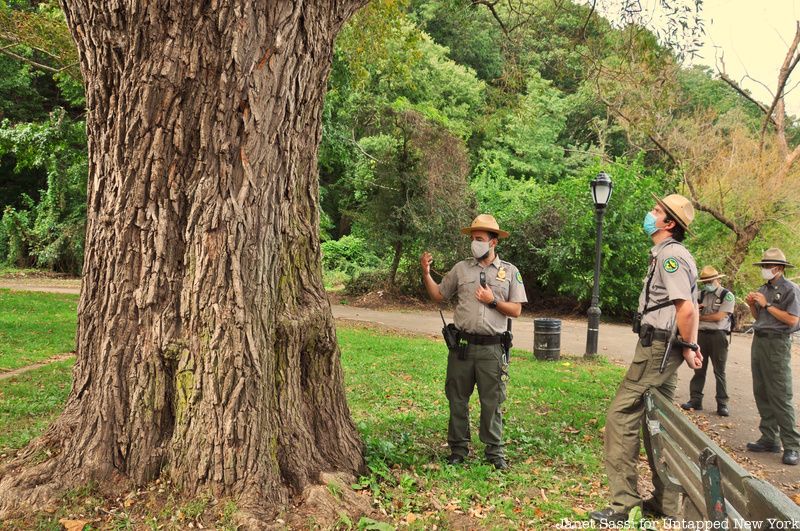
Located a stone’s throw from the Park’s salt marsh, this 100-year-old tree towers near a grassy field. The Willow, according to Park rangers Nick Baisley and Daniel Tainow, is not the oldest tree in the vicinity, but it’s one of a fast-growing species, which accounts for its size.
They estimate that it dates back to around 1895, the time when engineers were creating the Harlem River Ship Canal, connecting the Hudson and Harlem Rivers for commerce. But see it while you can, because the tree, they say, is nearing the end of its life. “Around 120 years is the average life span for a Black Willow,” says Tainow.
Coordinates: 40°52’26.9″N 73°55’21.8″W
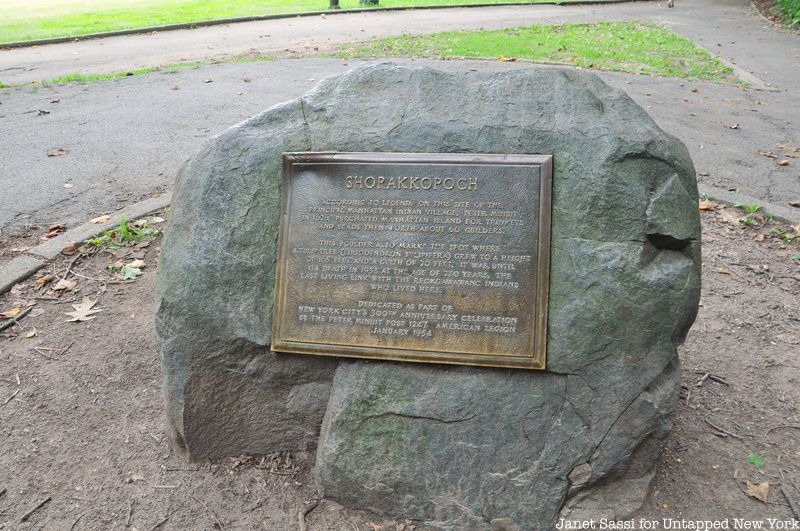
At the edge of the old-growth forest sits a large rock holding a plaque that reads “Shorakkapoch,” a Lenape word for “a wading place” or “place between two valleys,” according to Tainow. It was once the site of a 280-year-old Tulip tree celebrated as the tree under which Dutch settlers purchased a piece of the island of Manhattan from the Native American Lenape tribe.
“But if you actually do the math it doesn’t quite work out,” says Baisley, “The tree wouldn’t have been born yet.” Despite valiant efforts to save the tree, it died in 1938.
Coordinates: 40°52’24.1″N 73°55’25.3″W
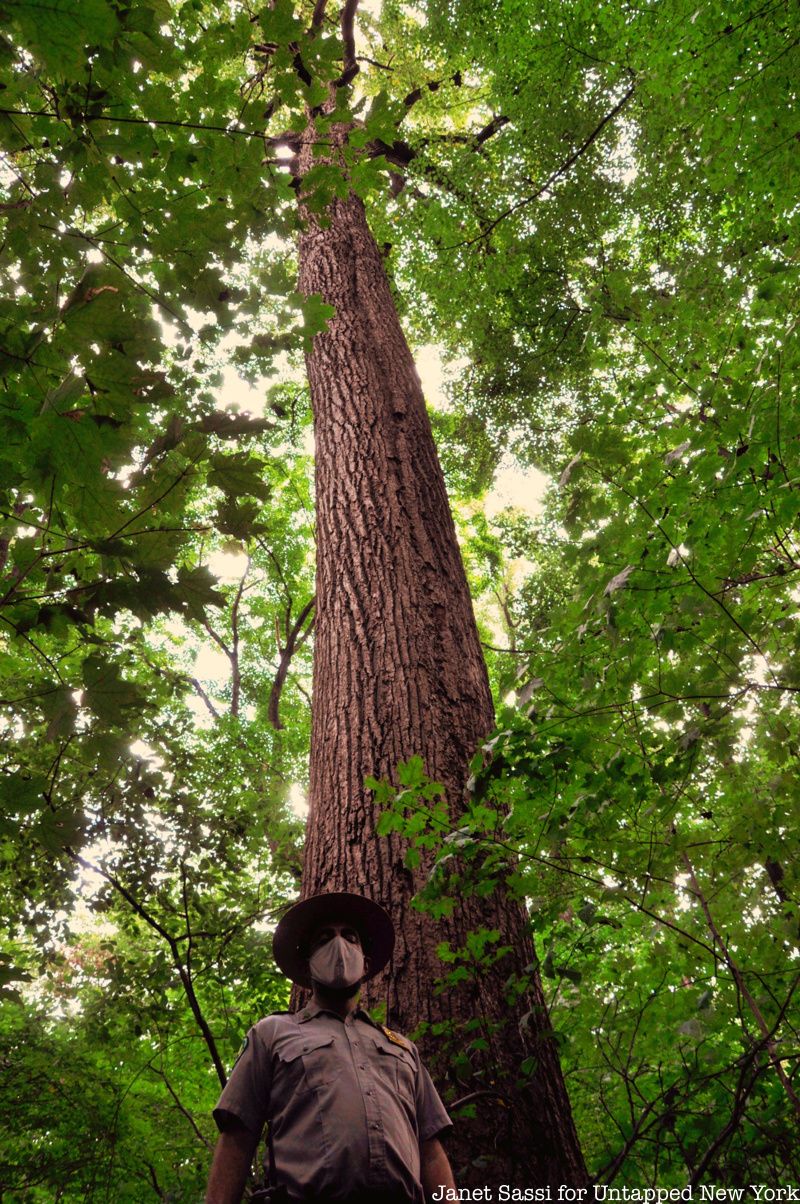
Just up the hill from the site of the dead tulip tree is a walkway lined with live Tulip Poplars that shoot up into the sky nearly 150 feet. The Tulip species are the tallest trees in New York City, says Baisley — although measuring their precise height is hard to achieve without scaling to the top. It is also hard to determine their age, although their lifespan is anywhere from 150 to 450 years, the rangers say.
The oldest, highest tree in all of New York City’s five boroughs is a Tulip, the Queens Giant, located in Alley Pond and estimated to be at least 134 feet with a 19-foot circumference of the trunk. “But I don’t know if anyone has measured all of the trees in Inwood Hill Park, because I think we have some contenders,” says Baisley.
Coordinates: 40°52’24.1″N 73°55’25.3″W
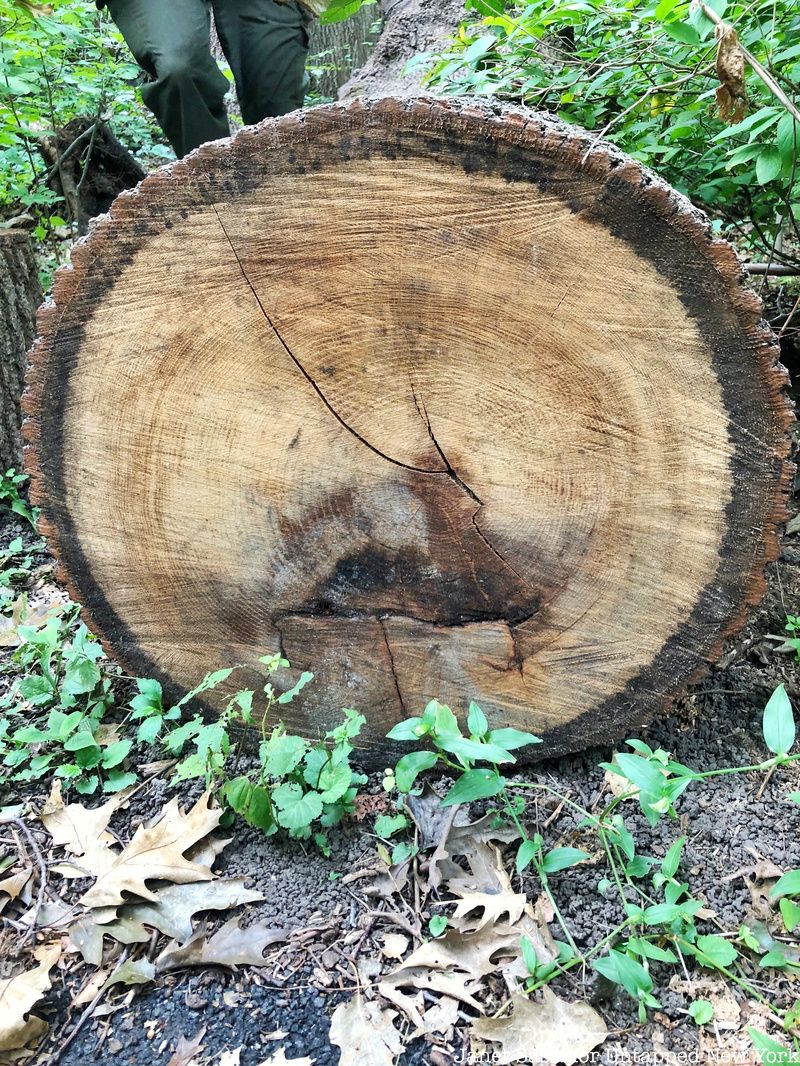
Recent spates of severe weather have left many downed trees; they’re an important part of the ecosystem, say the rangers. “One of the characteristics of a mature forest is that you are going to see dead trees as well,” Baisley says. Fallen trees allow light in, which allows for more growth below, and their decomposition creates fertile soil. In fact, the fallen trees in Inwood Hill Park remain where they land.
“In Central Park, you are not going to leave a dead tree on the ground, because the park is manicured,” says Tainow. “But here, as long as they’re not dangerous or not blocking a path, we leave them.”
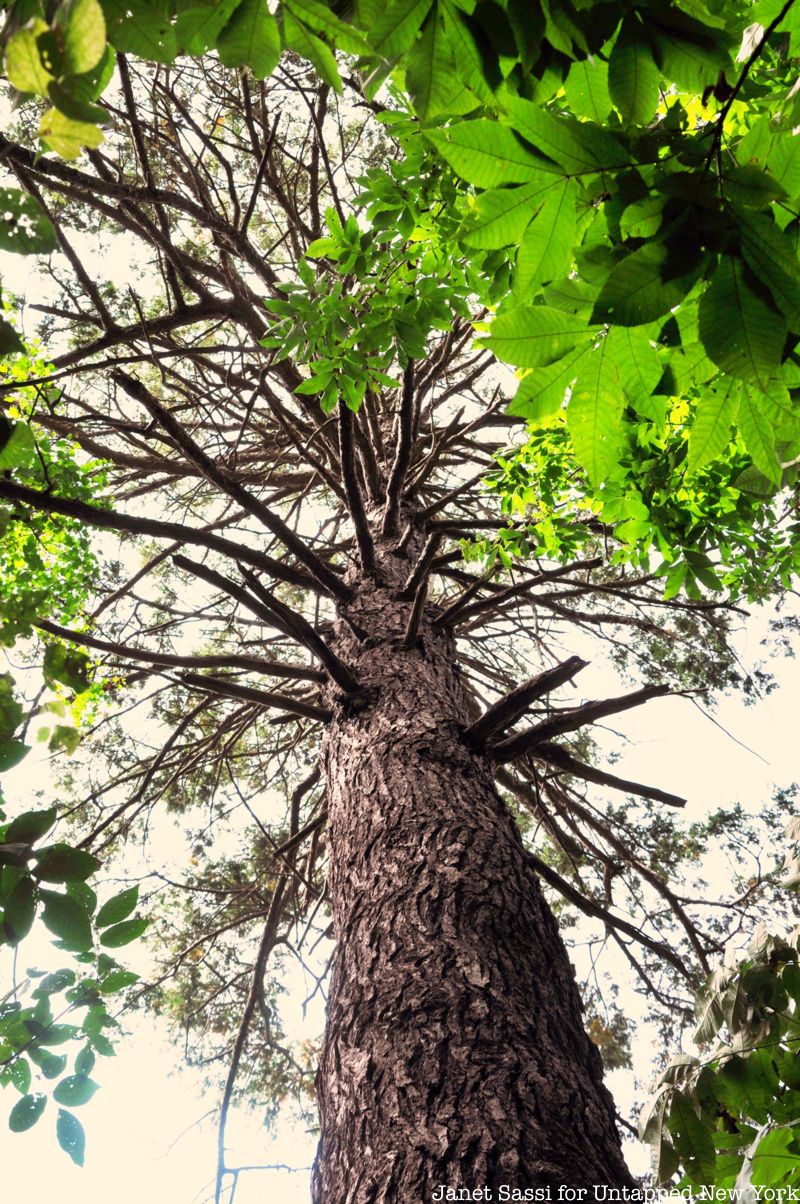
Although the hemlock tree is not nearly as famous as the infamous hemlock plant, this particular tree earns its namesake because it’s the “oldest and wisest” tree in the Inwood forest, says Baisley. “As far as New York City goes, this is a very important tree.”
It is one of only seven Eastern Hemlocks in all of Inwood Hill Park, and Baisley believes it could be 400 years old or more — although there is no way to measure a tree’s age without taking a risky core sample or chopping it down. Several of its tree branches have broken off, and Baisley counted 100 rings on just one calf-sized branch. The enormous trunk, he says, would surely contain many more rings. Unfortunately, Socrates has been invaded by Wooly Adelgids, parasites that slowly feed on its nutrients. It is presently on medication. “We’re doing all we can to save it,” says Tainow.
Coordinates: 40°52’09.3″N 73°55’33.5″W
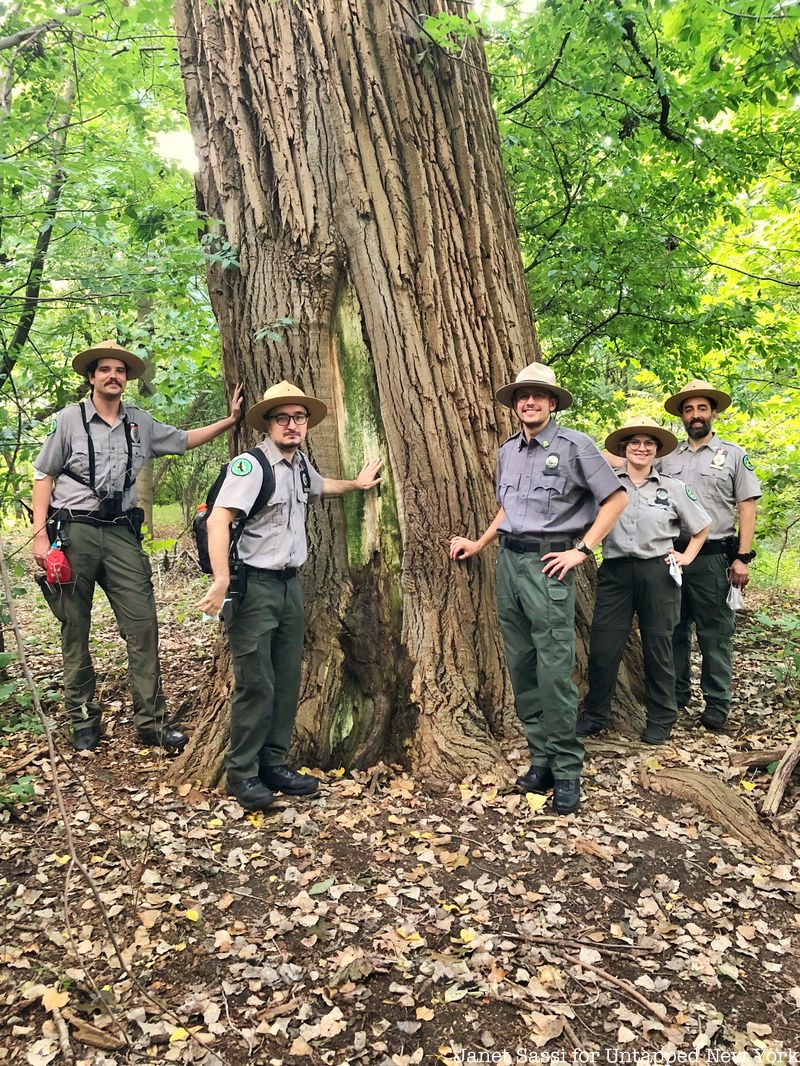
The deep furrows of the Eastern Cottonwood bark make good hiding places for insects and snakes, one of which was slithering down the side as we visited. A trio of Cottonwoods lines one of the forest paths, growing in an area that was once thought to be a clearing. The first in line, the biggest of the three, abuts a sunny section of forest. As the trees only grow in full sunlight and exposed soil, says Tainow, it is likely that it was planted on an estate back in the mid- or late-1800s, when a few wealthy landowners resided in parts of the forest.
“You typically see this tree as a standalone in a field, so it could have been on somebody’s lawn,” he says. Today there is no sign of a former estate, largely because Robert Moses worked to restore the forest to a natural state during the depression, says Baisley. At that time, the Civilian Conservation Corp. removed a lot of the ruins, which allowed natural growth to return.
Coordinates: 40°52’25.2″N 73°55’36.0″W
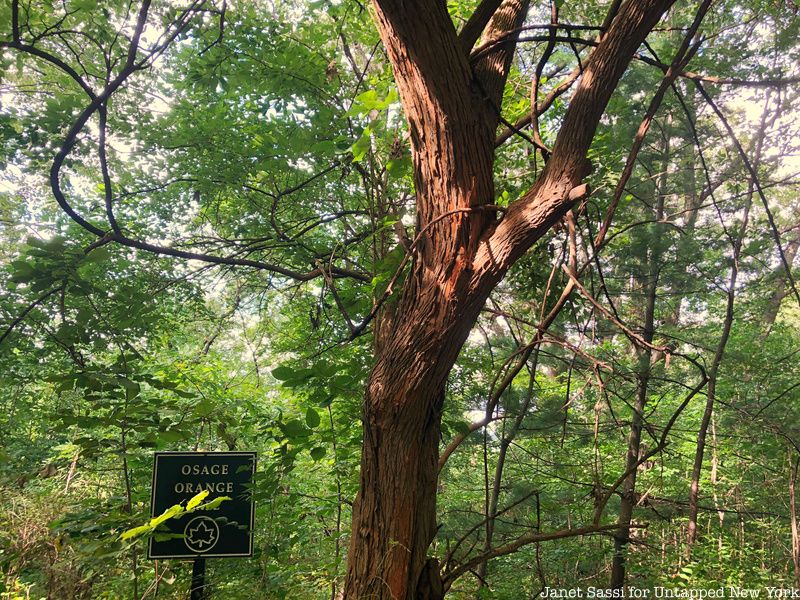
Another remnant from the days when estates existed in the forest, the Orange Osage was used to demark estate property lines, and its “umbrella shape” and thorns made it useful for penning cattle, says Baisley. It was native to the American Southeast, and the Osage tribe used its deeply curved, strong limbs to make bows and arrows. Its “orange” name derives from the slight rust color of the wood — used to tan leather — as well as the citrusy smell of the baseball-sized, bright green fruit.
“Visitors always ask what the neon green balls are, but nobody eats them,” says Baisley. “Every squirrel will try them — just once.” Yet at one time, Baisley says, macedons and mammoths loved them.
Coordinates: 40°52’25.1″N 73°55’37.8″W
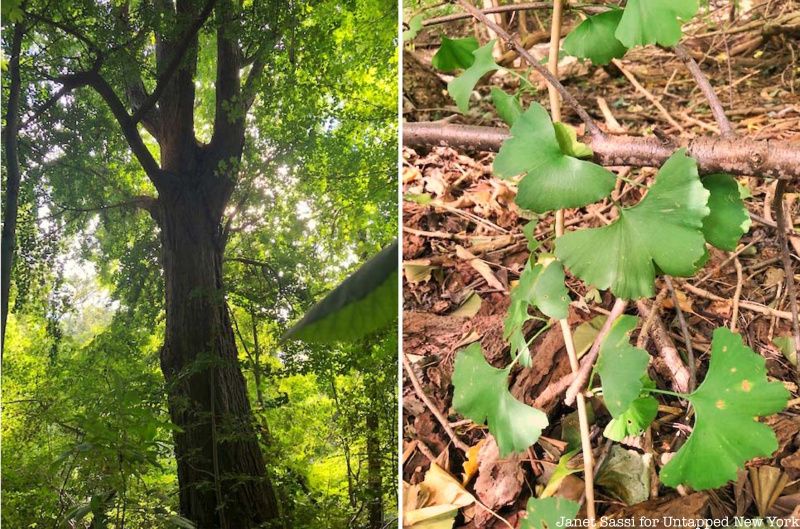
There’s a phrase among tree-folk that goes “Ginkgoes may stinko, but they almost went extinct.” This non-native tree was thought to be extinct because only fossils of the tree were found in America. But a living tree was discovered in China in the 1700s, and planting samples made their way to the American continent. Today, it is one of the most commonly planted street trees in part because it is drought and pollution-tolerant.
“But not the females — they produce a fruit that is very pungent, so much so that people will avoid walking underneath the stink.” No worries, though. The Inwood Hill Park Ginkgo is male. There’s a nut inside the tree’s fruit that is fairly tasty. “But you have to get through the stinky flesh first,” Baisley says.
Coordinates: 40°52’16.8″N 73°55’39.0″W
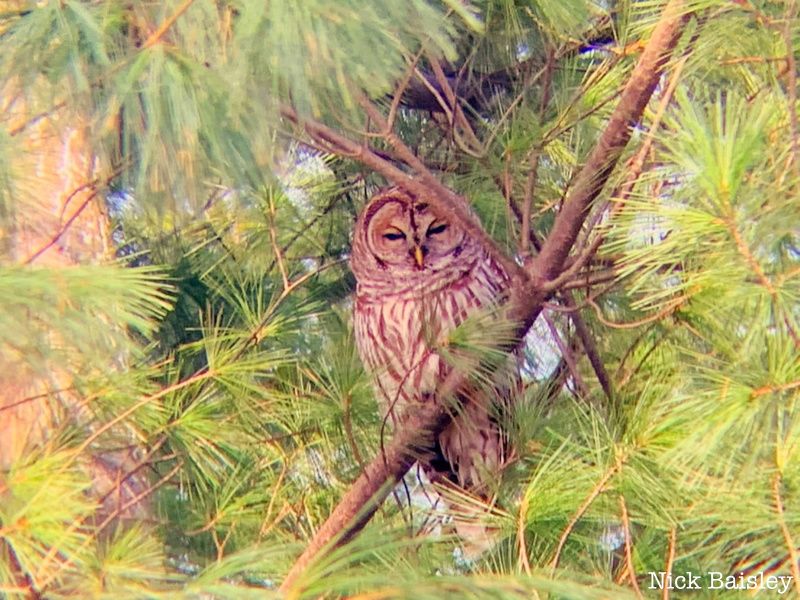
There are new clusters of White Pines throughout the park because they’re the trees that tend to be planted in clearings whenever a big tree falls down. “The White Pines are beneficial to wildlife,” says Baisley. “If you’re looking for owls, that’s where they typically hide — in the needle trees.”
In addition, each year in conjunction with the popular Drums Along the Hudson event, which celebrates Native American culture, the park plants a new White Pine near where the festival is held. “Those are known as peace trees,” he says.
Coordinates: 40°52’13.3″N 73°55’42.7″W
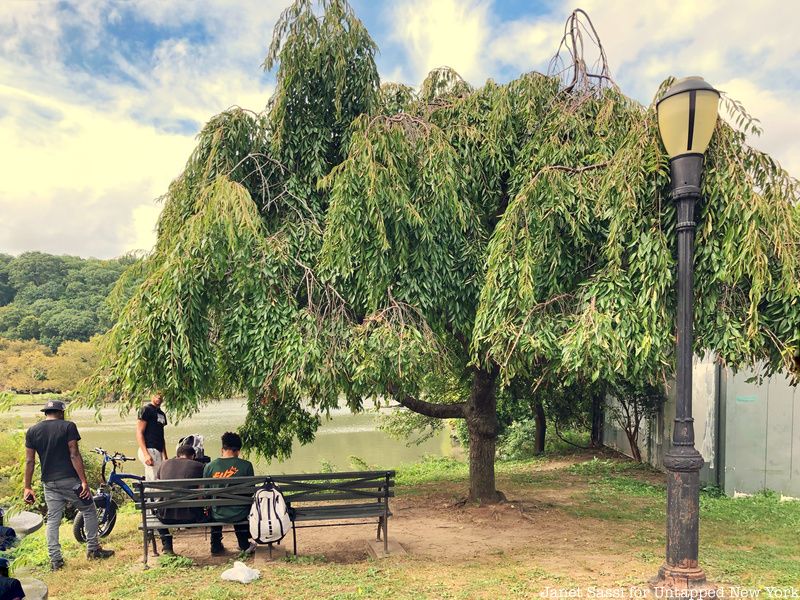
On your way out of the park, don’t miss this low-lying tree that overlooks the marsh and is a popular hangout spot and backdrop for pictures, especially when in its glorious spring bloom. It is a non-native bloomer from Asia and Japan that attracts scores of prom and wedding groups for photo-ops when the pink flowers are at their peak — usually May.
Coordinates: 40°52’25.5″N 73°55’11.5″W
Next, read about the secrets of Inwood Hill Park!
Subscribe to our newsletter